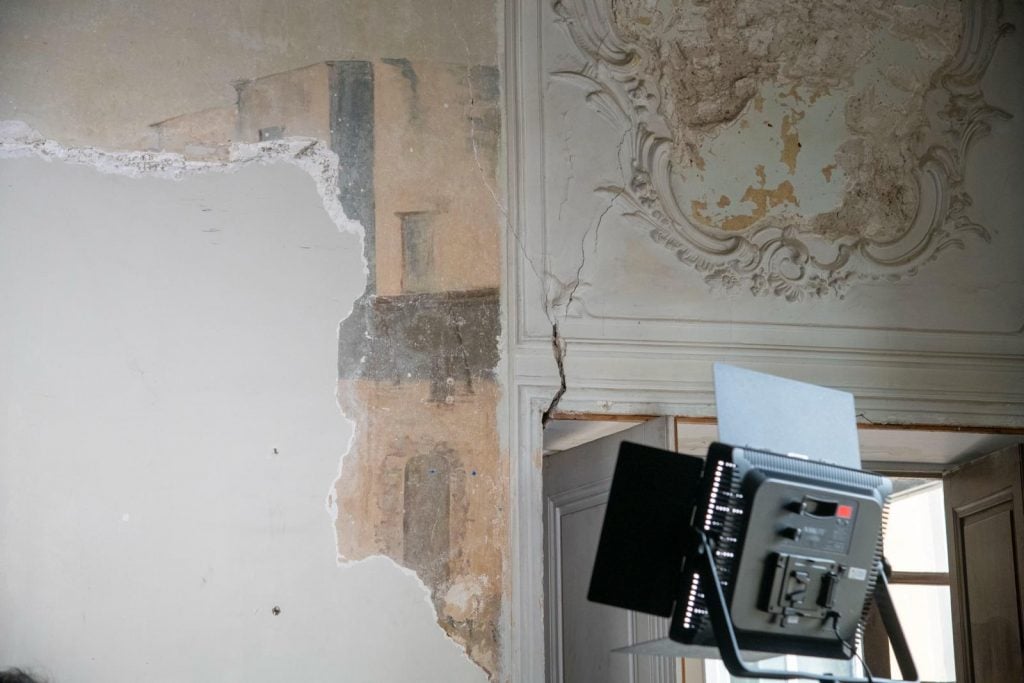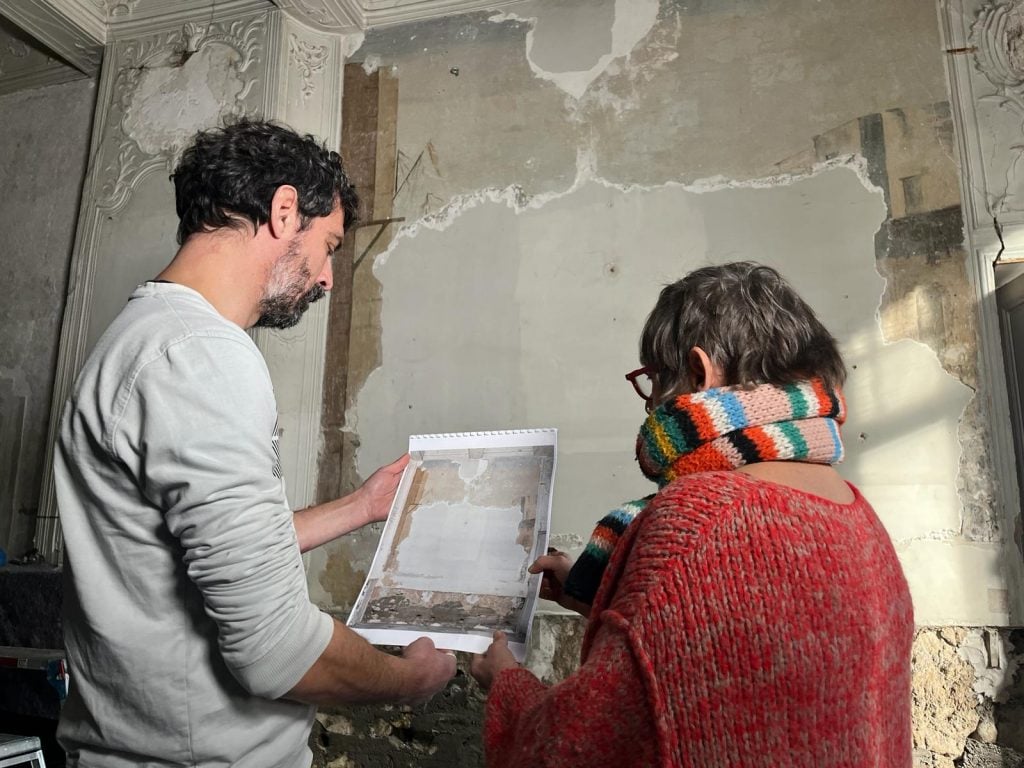Art World
A Mysterious Cézanne Work Is Discovered in the Artist’s Childhood Home
It's an entirely unknown work by the French painter.

A new work believed to be by the French painter Paul Cézanne has been found on the walls of his childhood home during renovations, officials announced last week. The work, which measures about 64 square feet, was not included in the 1996 catalogue raisonné by art historian John Rewald.
Sophie Joissains, a French senator and mayor of the town of Aix-en-Provence, shared the news on social media after a conference attended by Philippe Cézanne, the painter’s great-grandson, and experts on the artist from the Société Paul Cézanne and the Musée Granet.
“The walls of the ‘Grand Salon’ in the Bastide du Jas de Bouffan, currently being renovated, have just revealed some of the painter’s hidden, unknown treasures,” Joissains said.
The piece was found under wallpaper and plaster in the house’s main living room in August 2023. The home, known as the Bastide du Jas de Bouffan, sits on a 12.3-acre property bought by Cézanne’s father, Louis-Auguste Cézanne, in 1859.
The work depicts a maritime scene of pennons, or banners on a ship, with ship masts pointing into the sky. “A sky, banners atop a ship’s mast? A port entrance?” Joissains said. “With this unexpected discovery, Cézanne has not finished moving us, either.”

A new work believed to be by the French painter Paul Cézanne has been founded on the walls of his childhood home during renovations. Photo courtesy of Aixmaville/Facebook.
Joissains called Cézanne “the emblem and ambassador” of the town and announced that Aix-en-Provence would celebrate the restoration of the home with the Société Paul Cezanné in 2025.
“The public will then be able to discover this place, enriched by the updating of his early paintings from 1859, as well as by the arrival in Aix of Cezanne’s most famous painting, The Card Players,” she said.
Aix Ma Ville, the social media page for the town, celebrated the find as it has previously not held a single painting by the famed artist, The Art Newspaper reported. “Throughout the history of the Bastide, we have had no evidence of the presence of this painting so this is a happy discovery,” Bruno Ely, director of the Musée Granet, said in a statement provided by the town.
Previously, nine other paintings were known to have been painted by the artist onto the walls of the home, which was sold by Cezanné and his sisters in 1899. The paintings were later transferred to canvases and have dispersed to museums around the world, including the Petit Palais and Musée d’Orsay in Paris, the Chrysler Museum of Art in Virginia, and the Nakata Museum in Onomichi, Japan.
Those nine paintings, all featured in Rewald’s catalogue raisonné, include works such as Bather and the Rocks (ca. 1860–66). According to TAN, Cézanne is believes to have partially painted over the new work with Game of Hide & Seek (1864). The new work will soon be added to the 1996 catalog raisonné online.
When asked by TAN if any further discoveries are expected, Société Paul Cezanné president Denis Coutagne responded: “We have checked everywhere. We don’t expect to find anything else.”





